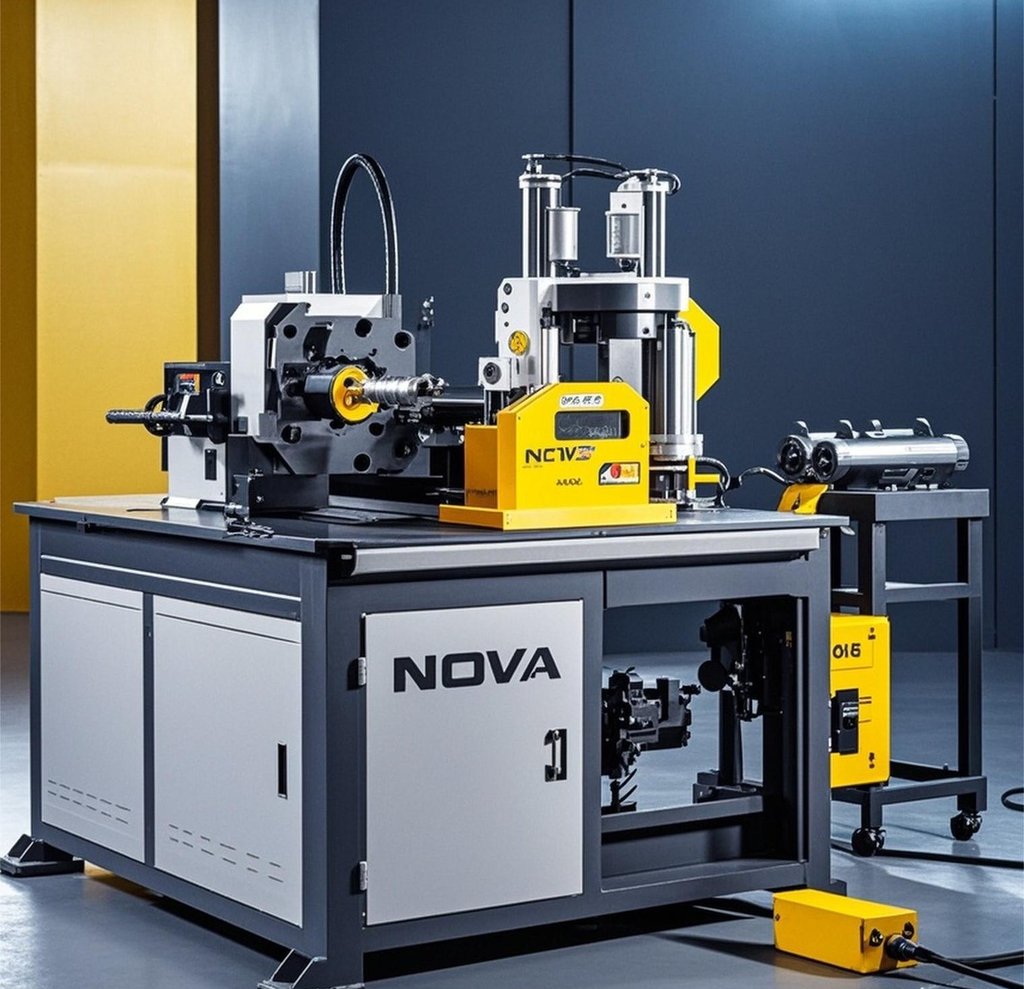Busbar Processing Machines in Power Equipment Manufacturing
Explore the crucial role of busbar processing machines in the manufacture of power distribution equipment. Learn how they enhance cabinet production and contribute to power system security.
7/25/20255 min read


Introduction to Busbar Processing Machines
Busbar processing machines are integral to the manufacturing of power distribution equipment, offering a blend of precision and efficiency in the production of busbars. These machines are specifically designed to cut, punch, and bend conductive materials, particularly copper and aluminum, which are essential for effective electrical conduction. In an era where power distribution needs to be both efficient and reliable, busbar processing machines streamline the production process, ensuring that components meet the exact specifications required for safe and effective energy distribution.
The design of busbar processing machines is a crucial factor in their functionality. Typically, these machines feature advanced technologies that allow for programmable operations. This means that operators can customize the machine settings based on the specific requirements of the busbars being produced. As a result, manufacturers can produce busbars in various sizes and configurations, catering to diverse applications ranging from industrial to residential sectors. The inherent versatility of busbar processing machines enhances their significance in the power distribution industry.
Furthermore, the accurate production of busbars directly influences the overall efficacy of electrical systems. Busbars serve as key components in managing large amounts of electrical current, often acting as the backbone of power distribution networks. Consequently, the precision with which busbars are fabricated becomes paramount, as any deviation from specifications can lead to increased resistance, potential overheating, and system failures. Innovative busbar processing machines mitigate these risks by ensuring high-quality fabrications, thus supporting the safe operation of power distribution systems.
In summary, busbar processing machines play a vital role in the manufacturing landscape of power distribution equipment. Their advanced functionality and precision in producing busbars illustrate their importance in enhancing the overall efficiency and reliability of electrical systems, setting the foundation for continued technological advancements within the industry.
The Manufacturing Process: From Cabinet Production to Busbar Fabrication
The manufacturing process of power distribution equipment is a multifaceted approach that seamlessly integrates various technologies and machines to ensure efficiency and precision. At the heart of this process lies the busbar processing machine, an essential tool that plays a crucial role in both cabinet production and the fabrication of busbars. These machines are designed to streamline operations and enhance the overall output quality, leading to improved power system security.
At the initial stage, cabinet production takes place, where robust enclosures are created to house electronic components. The design and construction of these cabinets require precise measurements and high-quality materials, ensuring that they can withstand the operational demands of electrical distribution. Once cabinets are manufactured, the focus shifts to the busbar fabrication process, where busbars, formed from conductive materials like copper or aluminum, are produced. These bar-shaped conductors serve as critical components, allowing the efficient transfer of electrical power within the system.
Busbar processing machines are implemented in this phase to enhance production efficiency. By employing advanced technologies such as CNC (Computer Numerical Control) systems, manufacturers can achieve intricate designs with exceptional accuracy. These machines automate processes such as cutting, bending, and punching, which significantly increases production速度 and minimizes waste. Unlike traditional methods, which often result in inaccuracies and excess material utilization, busbar processing machines ensure that each piece of material is optimized for the best possible outcome.
In factory settings, typical machinery setups may include integrated systems that combine the functions of multiple processes, further enhancing efficiency. For instance, a configuration may consist of a busbar cutter that feeds directly into a bending machine, allowing for seamless transitions between processes. Such arrangements not only optimize production flow but also contribute to an overall increase in manufacturing throughput.
In conclusion, the integration of busbar processing machines into the manufacturing process of power distribution equipment is pivotal for achieving high standards of accuracy, speed, and waste reduction. The use of these machines facilitates a more streamlined approach, ultimately contributing to enhanced power system security and operational effectiveness.
Enhancing Power System Security with Busbar Technology
The security and reliability of power systems heavily depend on effective electrical distribution methods, and busbar processing machines are integral to this process. Busbars are conductive materials that facilitate the transfer of electrical power within switchgears and other distribution networks. Advanced manufacturing techniques in busbar technology have led to significant enhancements in power system security by ensuring precision in design and functionality.
Modern busbar processing machines utilize cutting-edge technology that allows for the production of highly efficient and durable busbars. These innovations include the use of high-conductivity materials, such as copper or aluminum, which help minimize energy losses during distribution. Furthermore, the ability to customize dimensions, shapes, and other parameters ensures that busbars meet specific requirements based on system demands, providing greater reliability in various load conditions.
Another vital aspect of enhanced security through busbar technology is its contribution to improved load management. As electrical demands fluctuate, high-quality busbars can withstand varying load conditions without significant risk of overheating or failure. This resilience translates into increased fault tolerance in power distribution networks, thereby reducing the likelihood of outages or system failures. Additionally, the integration of advanced insulation materials and protective coatings provides an extra layer of security, minimizing short circuit risks and enhancing the overall safety of power distribution equipment.
Investing in state-of-the-art busbar processing machines fundamentally transforms power system security. Through precise manufacturing and innovative designs, these tools not only enhance the performance and safety of electrical systems but also support the evolving needs of modern infrastructure. As the demand for reliable power distribution continues to grow, the importance of busbar technology in ensuring security cannot be overstated.
Future Trends in Busbar Processing Technology
As the power distribution equipment sector continues to evolve, there are several notable trends emerging in busbar processing technology. One of the predominant developments is the increasing emphasis on automation. Manufacturers are investing in automated busbar processing machines that enable precise and efficient operations, significantly reducing human error. Automation not only enhances production efficiency but also allows for the consistent quality of output, which is crucial in power distribution applications where reliability is paramount.
Moreover, the integration of digital tools in the manufacturing process is gaining prominence. From the use of advanced software for design and planning to real-time monitoring systems, digitalization is transforming how busbar processing is conducted. These tools facilitate greater control over the production process, allowing for modifications and optimizations that were previously cumbersome or time-consuming. The capability to simulate various scenarios and their outcomes leads to more informed decision-making in the manufacturing of busbars, ultimately enhancing operational reliability.
Another significant catalyst for change is the impact of Industry 4.0 on busbar technology. This trend emphasizes connectivity and intelligent automation, wherein machines are integrated into a smarter production network. Such systems provide valuable data analytics, equipping manufacturers with insights into production performance, potential bottlenecks, and areas for improvement. As Industry 4.0 continues to proliferate, companies will adopt more interconnected, responsive processes in their busbar manufacturing operations, thereby aligning their solutions with the dynamic demands of the power distribution sector.
Furthermore, as market demands shift, companies are adapting their busbar processing solutions to meet the specific needs of various applications. This agility enables manufacturers to offer customized products that cater to diverse client specifications, thereby positioning themselves favorably in a competitive market landscape. Future advancements will likely prioritize sustainability as well, reflecting a growing awareness of environmental issues within the power distribution industry.
Innovate
Leading manufacturer of busbar processing equipment solutions.
Contact
Support
+131 2713 4627
© 2025. All rights reserved.
